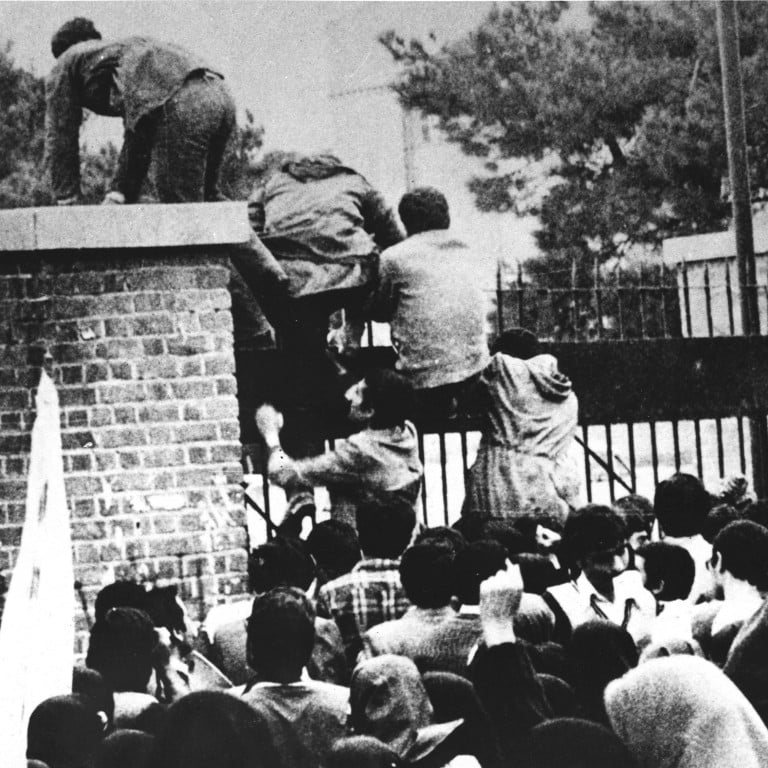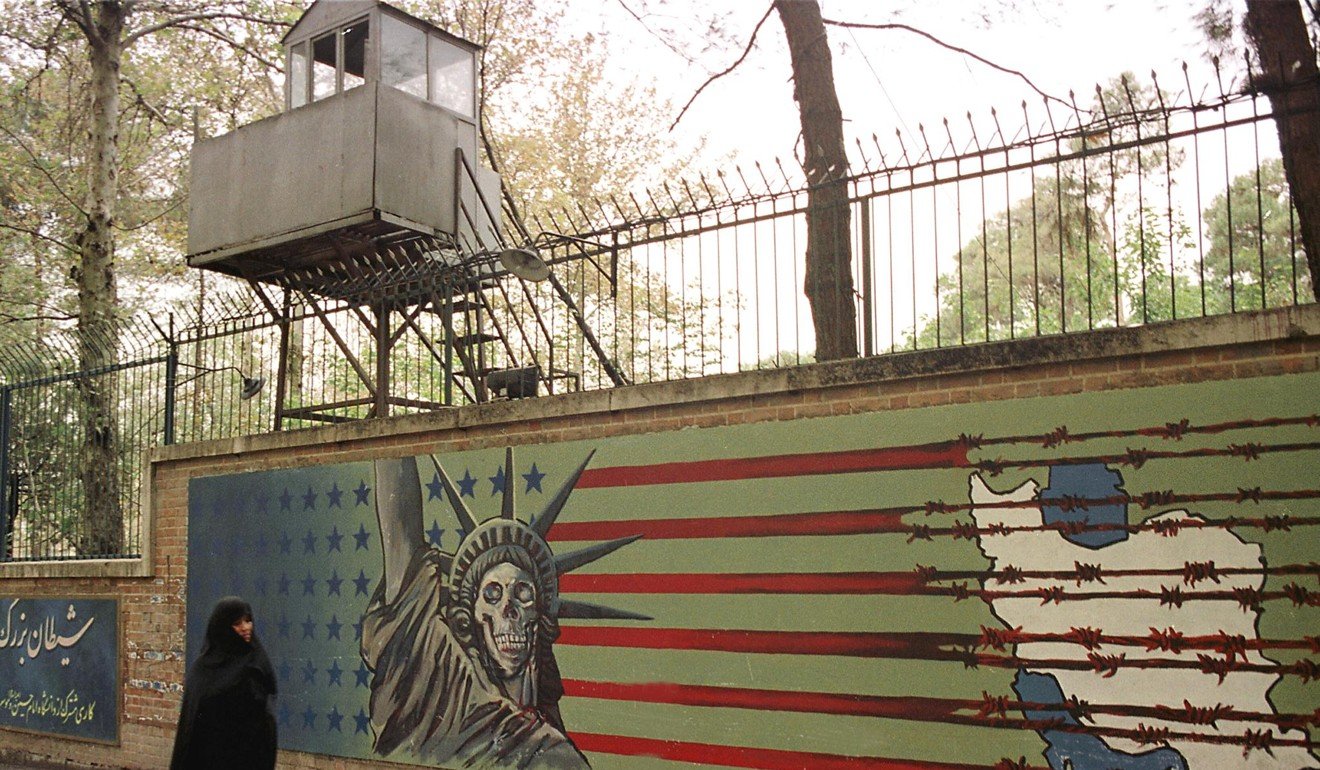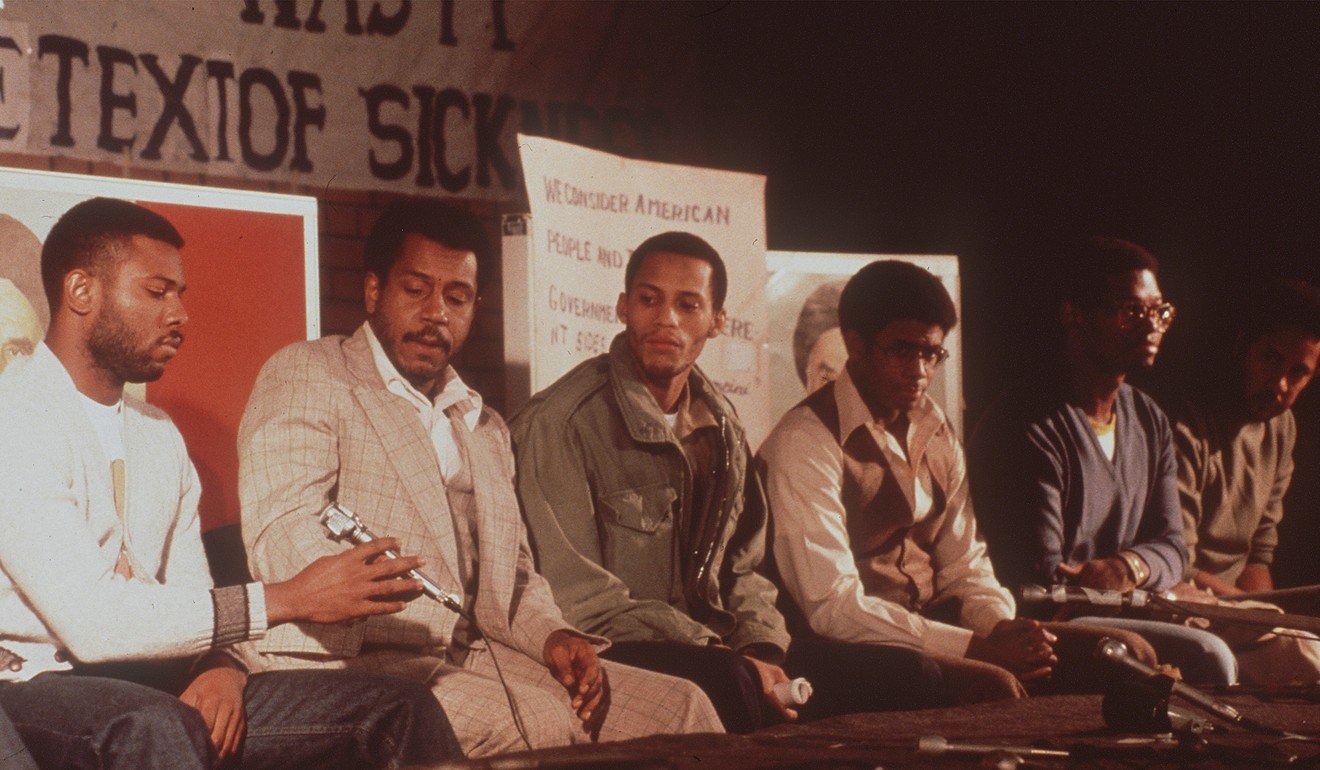
40 years on, Iranians recall 1979 US Embassy hostage crisis
- On November 4, 1979, students overran the complex to demand Washington hand over an ousted ruler after he was admitted to a US hospital
- It took 444 days for the crisis to end with the release of 52 Americans, but the US broke off diplomatic relations with Iran in 1980 and ties have been frozen ever since
The consequences of that crisis reverberate to this day.
“Sometimes they would bring a US flag and burn it, put it in flames and then throw it among the crowd,” said Kazemi, now 67, pointing to the spot. “They would come and chant ‘death to America,’ ‘death to the Shah’ … it changed the world as I knew it.”
Trump in tweet vows ‘end of Iran’ if it wants to fight
After several protests, the Islamist students raided the embassy on November 4 and took 98 hostages. It prompted President Jimmy Carter to expel Iranian diplomats and launch a failed rescue mission before the Americans were eventually released on the last day of his presidency, setting off decades of hostility amid an Islamic takeover that turned the country from a former US ally into perhaps its greatest adversary.

Outside the former embassy’s shaded red brick walls, which were in the process of being painted with anti-US murals for the upcoming anniversary, former protester Hossein Kouhi said he turned out in 1979 to denounce what he called US intervention in Iran’s internal affairs, something he says continues today.
“I had a good feeling then, but we have had a bad fate,” said Kouhi, now 76, as he blamed the US for shortages of medicines in Iran because of the sanctions. “Even today, if we allow, it (the US) will come here to plunder Iran, just like it’s doing to other countries in the region. No foreigner is a friend of Iran. They all lie.”
Trump doesn’t want war with Iran. But he’s backed himself into a corner
Zahra Tashakori, a 41-year-old schoolteacher, agreed, saying she was glad the American presence was long gone.
“Look at their movies. They promote violence and other bad things in the societies,” she said. “They ruined wherever they intervened in the region. Just look at Iraq, Afghanistan and Syria.”
Iran’s Supreme Leader Ayatollah Ali Khamenei, like his predecessor Ayatollah Ruhollah Khomeini, repeatedly hails the militants who took over the embassy as being “ahead of their time.”
Others on the street, though, had a more nuanced view in hindsight.
“I believed the US Embassy should have been closed down officially, but not through takeover,” said Ghasem Rabiei, 49. “The US was opposing the Islamic Republic in many ways, so they should have been deported from our country, but peacefully and legally.”
Reza Ghorbani, a 19-year-old engineering student at Tehran’s Azad University, asked: “What is the result of this super long hostility? I do not say the US government is good, but these lengthy bitter relations have damaged Iran, too.”


As it does every anniversary, Iran plans to pack the streets outside the former embassy – rebranded as the “Den of Espionage” – for another massive demonstration looking to fuel more anti-American sentiment for at least another year. For those who witnessed how it all began, it mostly serves as a reminder of all that it’s cost them.
“People should not suffer because of the hostilities among the two countries,” said Kazemi, the photographer. “If countries want to kill each other, kill each other. But ordinary people should not suffer. The inflation, the sanctions, everything is affecting all the people every day.”

